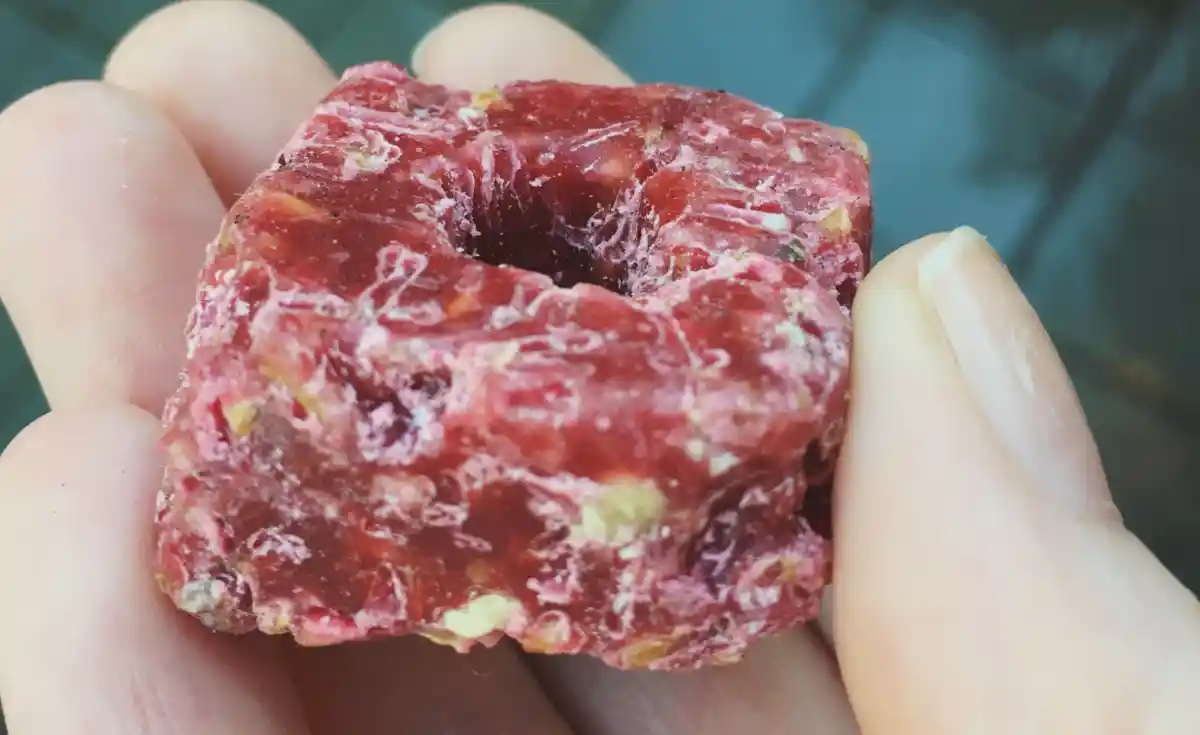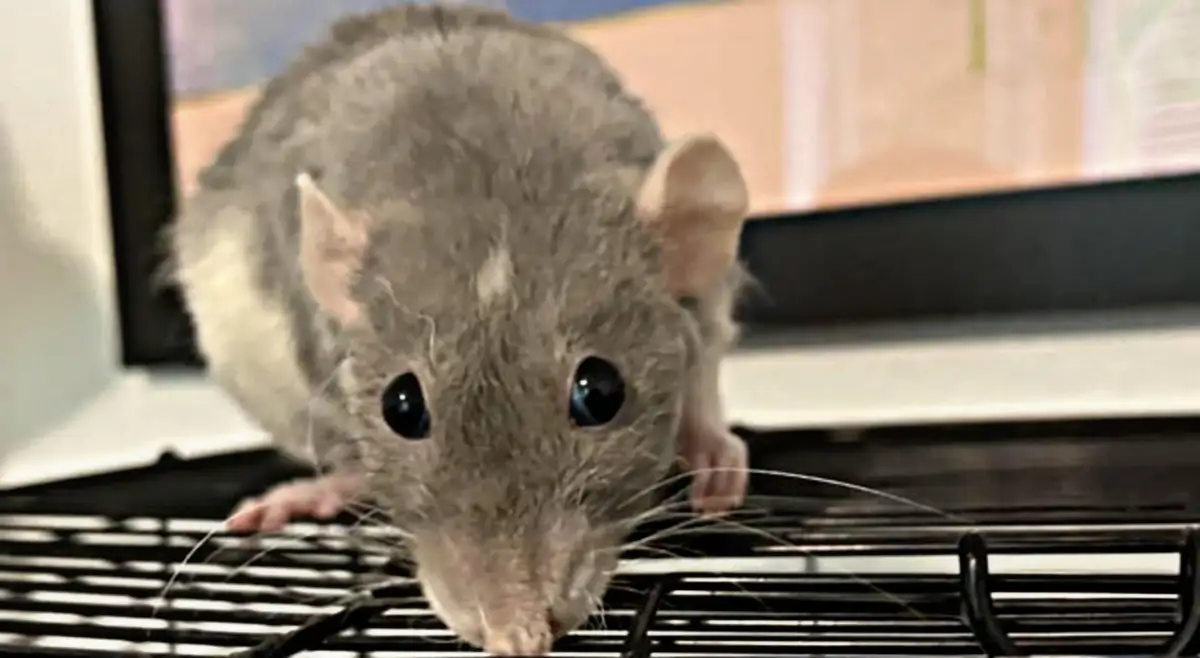Rats not eating poison blocks? Well, to catch a rat, you need to use bait. Some common types of bait food that attract rats are cheese, peanut butter, bacon, cereals, or meats. However, rats can be choosy. One rat might like peanut butter, while another may not be interested in it.
It all depends on the kind of rat you want to catch and what they like to eat. There are various rat species with different appetites. The first thing you should do to catch these pests is to figure out which type of rat is in your home.
Black Rat
The black rat, also known as Rattus rattus, is smaller than the Norway rat, reaching about 12 inches in length. They like tropical climates and usually stay within 300 miles of the coast. Originally from Asia, they have also found their way to the US. They have black or brownish fur and a blunt nose.
Black rats struggle in cold weather, seeking shelter in attics, chimneys, or on roofs. They earned the nickname “ship rat” due to their habit of burrowing into crates being shipped and commonly being found on boats.
These critters are smart, but they’re picky eaters. You can’t catch them with just anything on a trap. To succeed with rat traps for this species, you need some know-how because they are particular about their diet. In their native lands, they prefer palm trees and feast on leaves and rotting vegetation nearby. Being vegetarians, the bacon won’t lure them into the trap.
To give food to the black rat, try offering these options:
- Dried fruit and berries
- Slugs, snails, or snail shells
- Different types of nuts and peanut butter
- Unflavored dental floss
Common Norway Rat
The most common type of rat is called the Norway rat (Rattus norvegicus). These rats originally came from China, but you can find them almost anywhere in the world except Antarctica because it’s too cold there. Norway rats are usually brown, gray, or a mix of both colors. They can grow as big as 16 inches. These rodents are not picky eaters and will consume just about anything. That’s why you often find them in lower areas like basements, sewers, crawlspaces, and other underground regions.
To catch this rat, you’ll need a sturdy trap, but you don’t have to worry too much about the food you use as they are not very picky eaters. They will readily eat various types of food.
Discover a groundbreaking, automated, and safe way to control rats and mice in your home or business. Find out more now.
Even though these rats dislike cold weather, they are tough and can endure extreme conditions. They are also quite smart, making it possible for them to snatch your bait without triggering traps, outsmarting even spring traps.
For effective rat trapping, try using the following foods to attract the Norway rats:
- Peanut butter and nuts
- Bacon
- Dried fruits of any variety
- Hot dogs or sausages
- Gumdrops, chocolates, or similar sweets
- Unflavored dental floss
Rats Not Eating Poison Blocks: Do These

The general, expert advice is to try setting different types of rat bait and observe which one they prefer. By their food choices, you can tell if it’s a Norway rat or a black rat. If the problem is severe, consider getting a trap camera to get a close look at the pest you want to catch. Once you’ve identified it, you’ll know how to proceed effectively.
All said, do the following for rats not eating poison blocks:
1. Try Food Sampling Before Setting the Trap
Here’s an interesting fact: rats can’t vomit. Rats have a strong wall between their stomach and throat that works like a one-way door. Once poisons get in, they can’t get out. Rats don’t have the muscle power to open this door the other way and bring up food or liquid. They also don’t have the brain signals needed to control these muscles for throwing up, even if they had strong enough muscles – DW Science.
When they come across a new food, they will only try small bits of it to make sure it won’t make them sick.
Since they can be cautious about new foods, it’s a good idea to scatter various things around for them to try. This way, they can develop a liking for the food.
Once rats see that the food is safe and irresistible, they won’t hesitate to take a bite on a trap. If you rush with the traps too soon, they might avoid the bait altogether.
2. Use Scented Bait and Rat Attractants

Rats are drawn to damp, moldy places because they love the smell. Use stinky cheese like Limburger on traps to make them more attractive.
Remember, they also enjoy wood and cardboard as food, so consider their preferences when trapping them.
Another useful trick is using rat breath odor, an attractant that signals a safe space for rats. Be cautious though, and don’t use too much of it. A tiny amount is enough to lure them to the traps. Use these attractants to keep rodents away from an area.
3. Choose the Proper Size and Shape for Rat Bait
you probably did not think it is important to know how rats eat and adjust the food size and shape accordingly. Rats hold things with their paws, so you don’t want the food to be too big.
Picture the difference between a chicken nugget and a hot dog in size and shape. The chicken nugget would be too large for them to handle, but a hot dog’s longer and skinnier shape makes it easier for them to grab.
Of course, they can’t hold an entire hot dog but try to make the rat bait similar to that shape for better success. That will end the dilemma of rats not eating poison blocks.
4. Avoid Rodent Food Competition
Don’t just place food on the trap plate; also put some underneath and at the back. Encourage rats to step onto or into the device for better results. While snap traps are widely used, they can be cumbersome to set and reset, and rats may learn to take the bait without triggering them.
In the rodent world, food competition is intense. Ensure the bait you use matches what they typically eat, or they won’t be interested.
Sometimes, rats may not be hungry and could be searching for a nesting spot rather than food. You can explore other options to deal with critters without worrying about baiting or resetting traps.
And if you don’t mind, you could switch to a live bucket trap for rats. We have detailed the information to help you capture rats alive in a self-made bucket trap.
Conclusion
The power to end rats not eating poison blocks is in your hands, as long as you know what tips to lure them to the poison block. If you have a severe rat infestation, DIY won’t help so much. You will need professional interference.
Have your local pest control provider plan and set up a more suitable rat control measure to stop rat activities in your home. Professionals are also smart enough to use control methods that are safe around pets and children, anywhere in your home or outbuildings.





